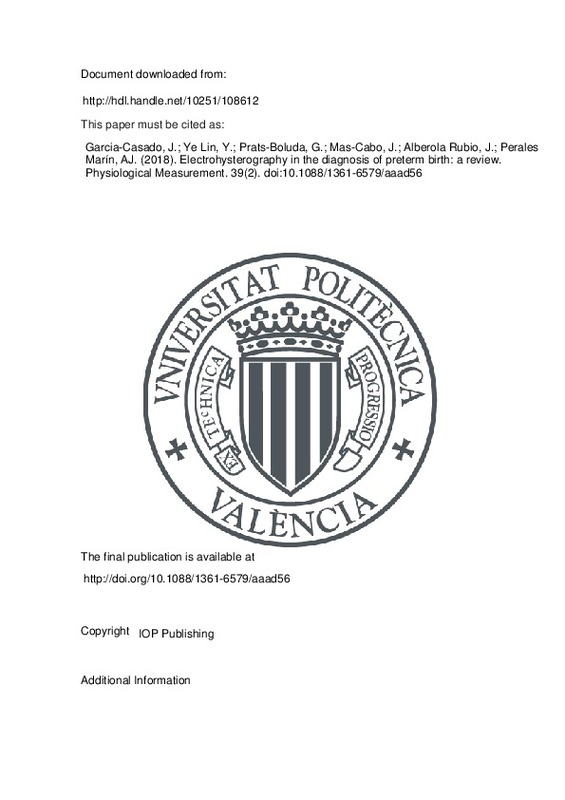|
Resumen:
|
[EN] Preterm birth (PTB) is one of the most common and serious complications in pregnancy. About 15 million preterm neonates are born every year, with ratios of 10-15% of total births. In industrialized countries, preterm ...[+]
[EN] Preterm birth (PTB) is one of the most common and serious complications in pregnancy. About 15 million preterm neonates are born every year, with ratios of 10-15% of total births. In industrialized countries, preterm delivery is responsible for 70% of mortality and 75% of morbidity in the neonatal period. Diagnostic means for its timely risk assessment are lacking and the underlying physiological mechanisms are unclear. Surface recording of the uterine myoelectrical activity (electrohysterogram, EHG) has emerged as a better uterine dynamics monitoring technique than traditional surface pressure recordings and provides information on the condition of uterine muscle in different obstetrical scenarios with emphasis on predicting preterm deliveries. Objective: A comprehensive review of the literature was performed on studies related to the use of the electrohysterogram in the PTB context. Approach: This review presents and discusses the results according to the different types of parameter (temporal and spectral, non-linear and bivariate) used for EHG characterization. Main results: Electrohysterogram analysis reveals that the uterine electrophysiological changes that precede spontaneous preterm labor are associated with contractions of more intensity, higher frequency content, faster and more organized propagated activity and stronger coupling of different uterine areas. Temporal, spectral, non-linear and bivariate EHG analyses therefore provide useful and complementary information. Classificatory techniques of different types and varying complexity have been developed to diagnose PTB. The information derived from these different types of EHG parameters, either individually or in combination, is able to provide more accurate predictions of PTB than current clinical methods. However, in order to extend EHG to clinical applications, the recording set-up should be simplified, be less intrusive and more robust-and signal analysis should be automated without requiring much supervision and yield physiologically interpretable results. Significance: This review provides a general background to PTB and describes how EHG can be used to better understand its underlying physiological mechanisms and improve its prediction. The findings will help future research workers to decide the most appropriate EHG features to be used in their analyses and facilitate future clinical EHG applications in order to improve PTB prediction.
[-]
|







![[Cerrado]](/themes/UPV/images/candado.png)


